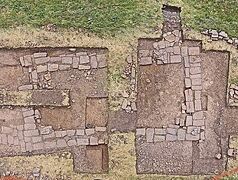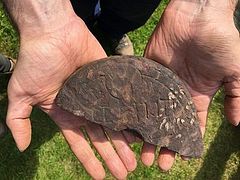Holy Island, Northumberland, England, July 5, 2022
 Photo: civilisationsanciennes.org
Photo: civilisationsanciennes.org
A rare religious artifact was recently uncovered on the Holy Island of Lindisfarne.
During last year’s dig season, a grave was uncovered with a man, believed to be a monk, who was found wearing a bead necklace fashioned from salmon vertebrae.
The necklace dates back to the 8th or 9th century and is the only artifact ever found in a Lindisfarne grave, reports Arkeonews.
The prayer beads were recognized by zooarchaeologist Marina Chorro Giner. “This bright, eagle-eyed researcher looked at them and said, actually these aren’t just fish bones, they’ve been modified and turned into something,” he said.
“The holes in the vertebrae through which the spinal column runs were enlarged, either during the making of the necklace and/or over time as the bones wore against the threading. Fish were one of the earliest recognized Christian emblems, therefore fish bones are both a thematically fitting material and a readily available local supply for devotional jewelry,” the outlet writes.
Lindisfarne, known as the Holy Island in England, is known for the illuminated Lindisfarne Gospel, and as home to a number of great ascetics and holy hierarchs of the first-millennium, undivided Church, such as St. Cuthbert and St. Aidan.
In 2017, the foundations of what is likely one of the largest and earliest Saxon churches on Lindisfarne were unearthed.
Follow OrthoChristian on Twitter, Vkontakte, Telegram, WhatsApp, MeWe, and Gab!





